How 4 Visionary Designers Approach Luxury Interior Design
Luxury Defined shares advice from experts on how to hire a luxury interior designer for your home
Luxury Defined shares advice from experts on how to hire a luxury interior designer for your home
A chandelier, crafted from hundreds of delicate Bohemian glass rods, snakes its way across the ceiling of a voluminous living room, giving the elegant space an unexpected and simple—yet stunning—focal point.
In the dining room, paneling hand-painted with a blossoming magnolia tree motif decorates an entire wall. These are just two of many bespoke pieces that adorn an 8,000-square-foot (743 sq m) home that borders London’s Hyde Park.
Originally two separate duplex apartments, the property was transformed into a beautiful single residence for a young international family by interior designer Katharine Pooley (pictured below) and her team.
“When I first saw the two apartments, I knew we could make something incredibly special by merging them together,” says Pooley, who has won multiple awards and is one of the world’s most respected interior designers.
“Double-height spaces, especially those with intricate plaster moldings, columns, and marble fireplaces, are very unusual in London and this was, therefore, a very exciting and striking backdrop to create the contemporary design this client requested.”
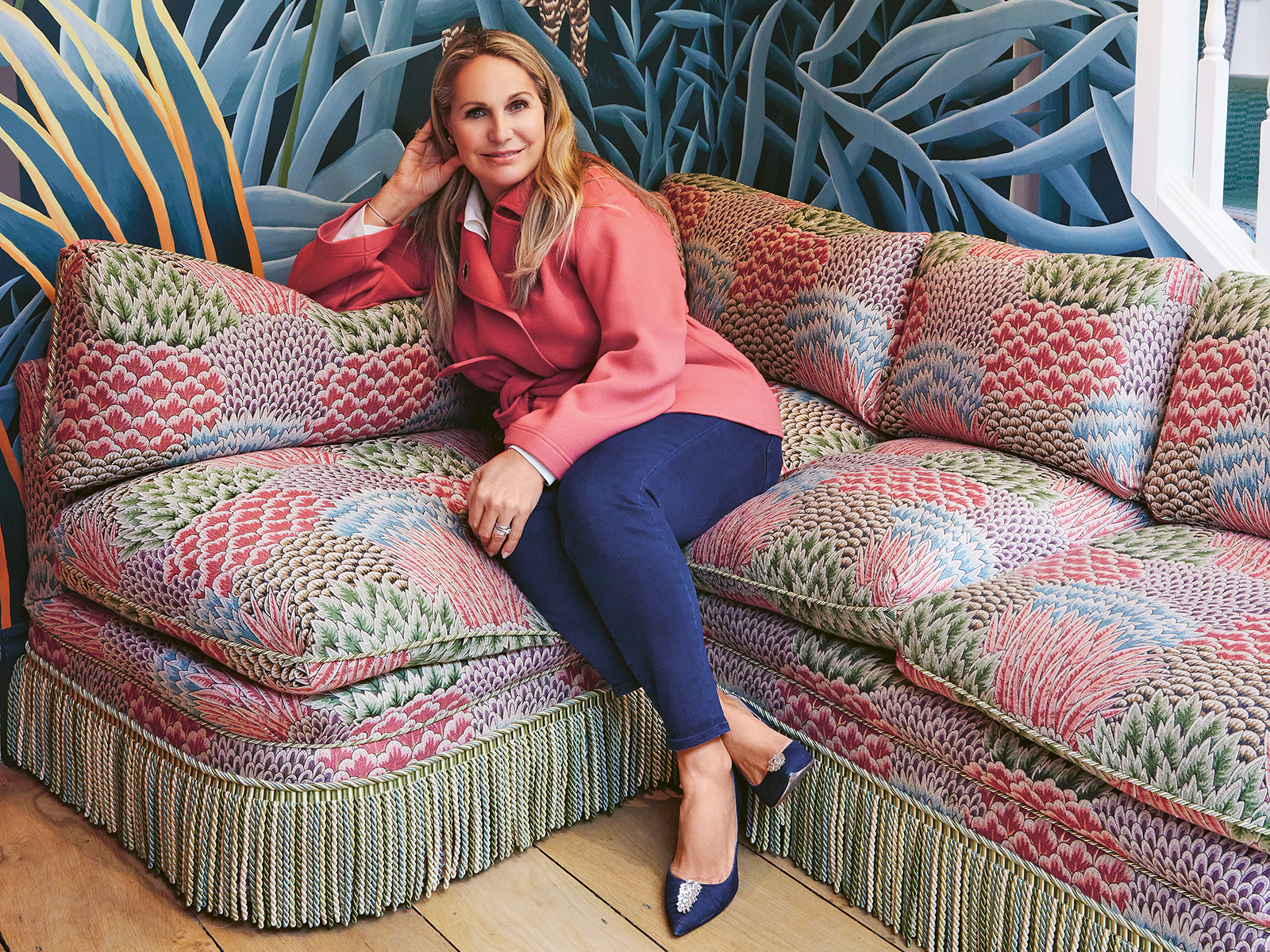
The work took three years, Pooley knocking the two apartments together to create the five-bedroom home. To complete the interiors, Pooley also delved into her substantial contacts book, which bulges with British and European craftspeople.
“I found inspiration in the views this home enjoys of Hyde Park and commissioned hand-painted silk wallpaper with tree motifs, leaf-shaped chandeliers, and bespoke foliage-themed ironmongery to ensure that the timeless beauty of the trees outside was incorporated into the space within,” she says.
The property is an outstanding example of the difference interior designers can make, in this case realizing the potential a space has to become a stylish and contemporary home that is perfectly tailored to the lifestyle of its residents.
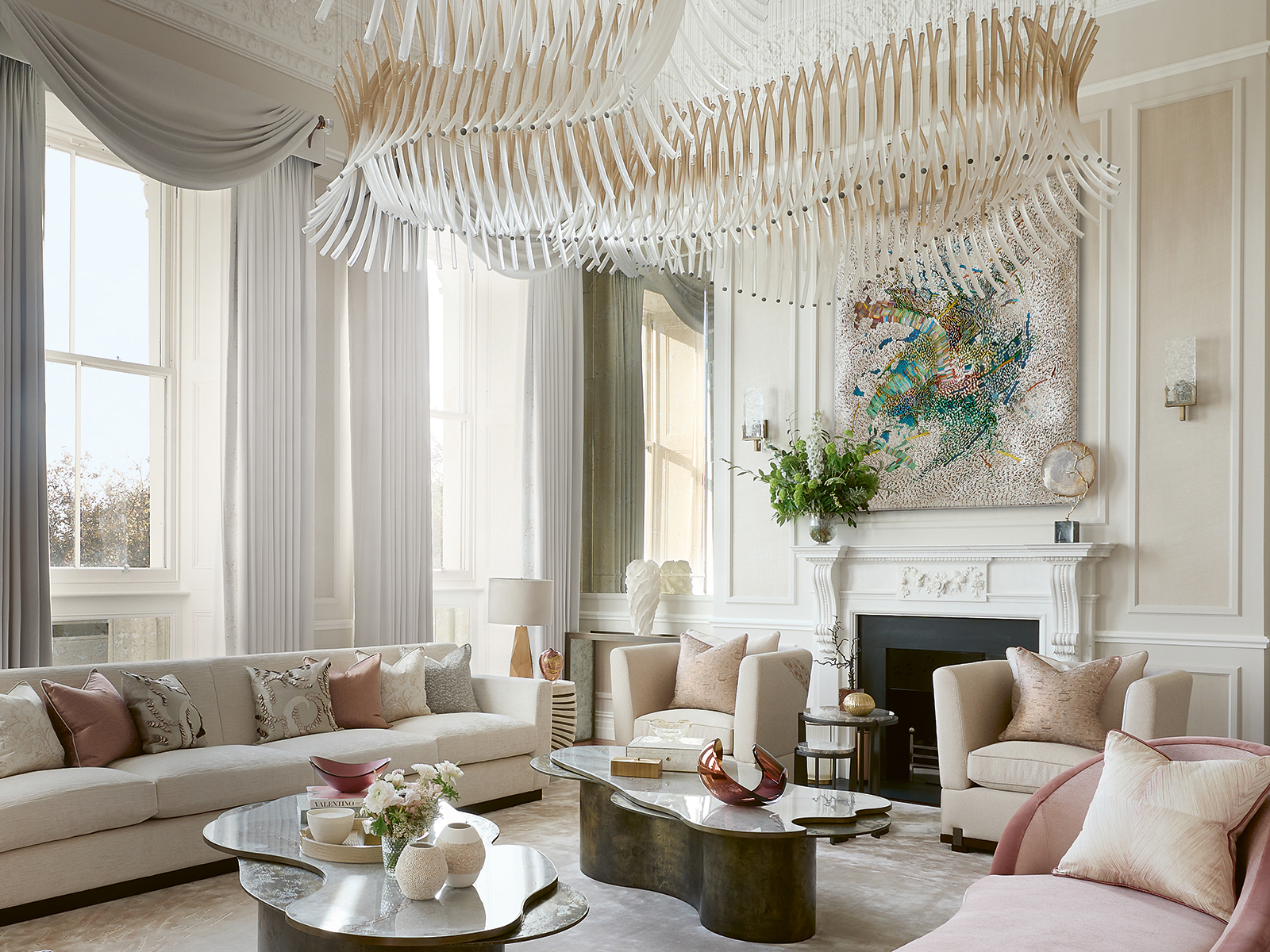
Meanwhile, in São Paulo, Brazil, Studio Melina Romano cleverly transformed a 226-square-foot (21 sq m) studio apartment in the country’s frenetic second city into a peaceful haven through both the design and the choice of materials. “We challenged ourselves to bring creative solutions to the small space,” says Melina Romano, head of the eponymous practice (pictured below).
“One is a shelf that runs across one wall of the studio. It transforms from the worktop in the kitchen to a platform for the television in the living room and a desk in the home-office space. We also combined textures and colors to create a peaceful atmosphere that also conveyed the warmth of a home.”
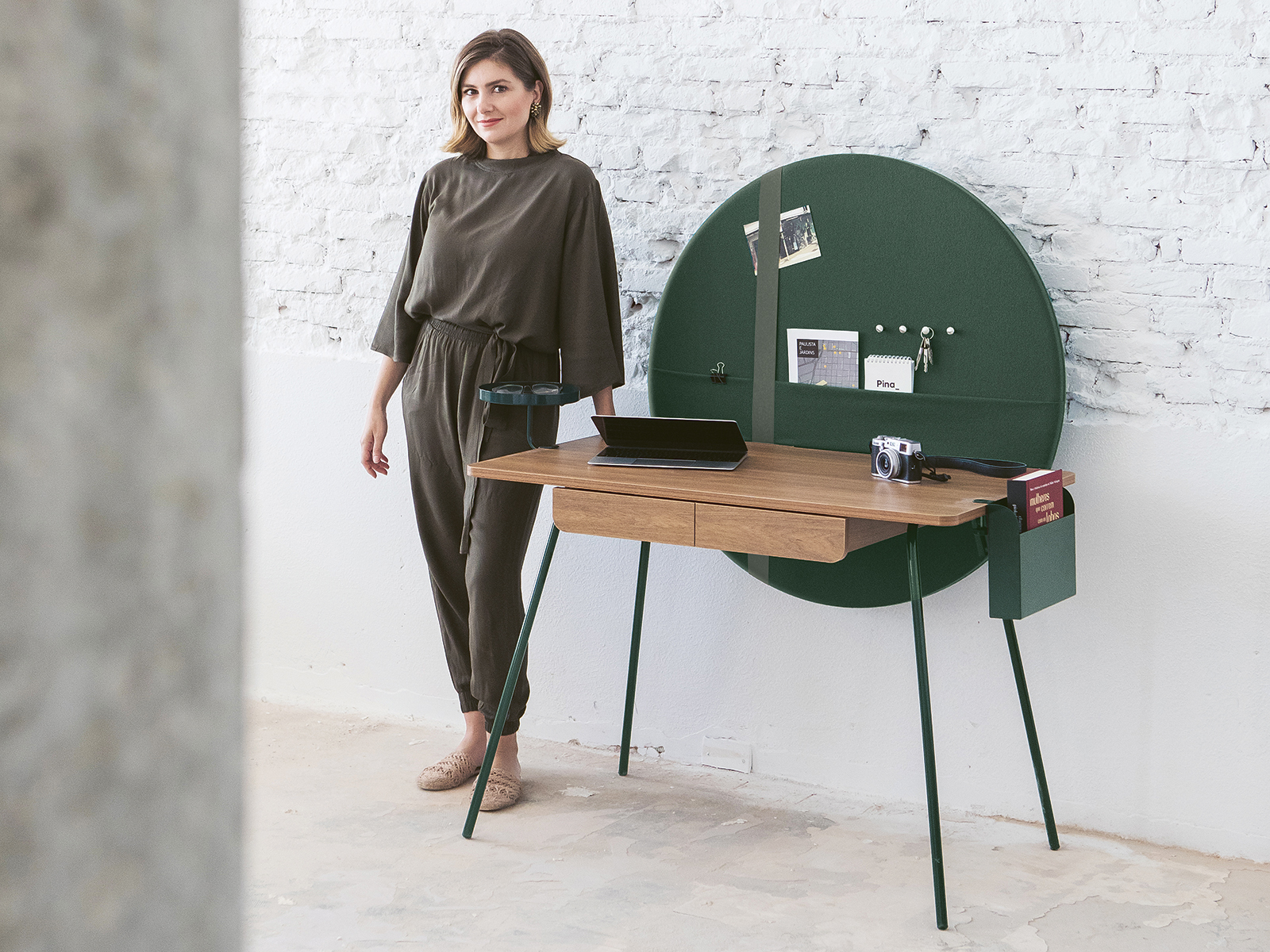
Different again is an apartment in New York City’s NoMad neighborhood. Here, Ahmad AbouZanat (pictured below) helped a couple completely furnish their new home, right down to the dinnerware and bed linen, and notably with a chic mix of American and North Italian statement pieces, many created by exciting new talents.
“The couple were well-traveled and had an appetite for design but they lacked confidence in deciding what pieces worked together,” says AbouZanat, the acclaimed head of Project AZ, who has also overseen projects in Saudi Arabia and Qatar. “I was able to use my contacts to introduce them to designers and pieces they would never have been able to source on their own.”
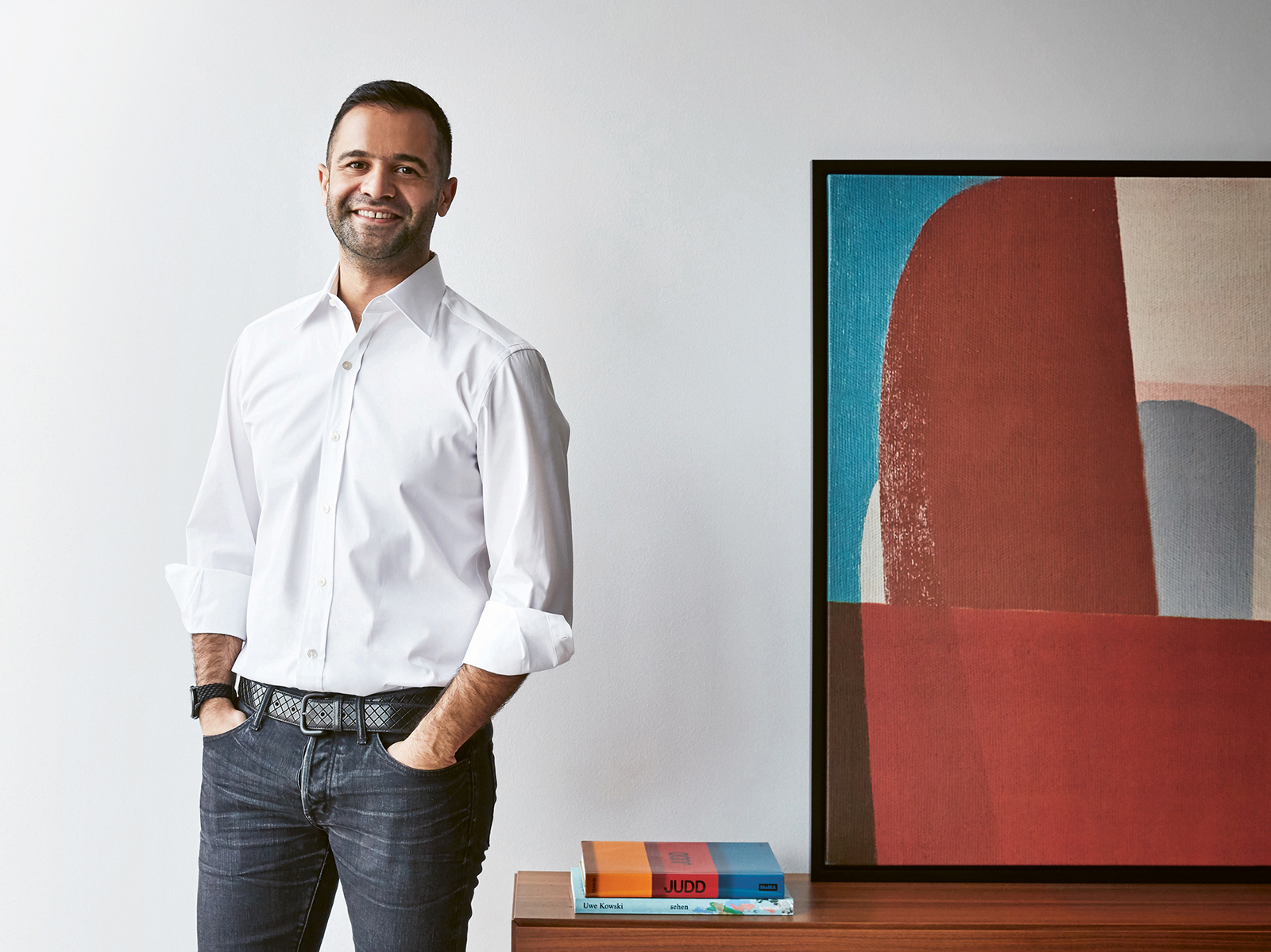
Whatever the size of the project, finding the right interior designers is crucial to a successful end result. The owners of the NoMad apartment chose AbouZanat on the basis of a light fitting.
“They had interviewed other designers but felt none were a good match as not only did their proposed designs lack their aesthetic, in particular they did not like any of the light fixtures suggested,” he recalls. “So, before I did anything else, I sent over five suggestions for a light over a dining table (the only piece they were bringing to the project as it was the first item they bought together). They liked them all—and when we began working together, they already knew which light fixture was going in the dining room.”
It is important to meet face-to-face so a client can connect with us and understand if we are the ideal people to design their space—Melina Romano
Usually, however, the process of choosing interior designers begins with a look at numerous portfolios of work—a good starting point in finding those to view is personal recommendations along with suggestions from industry bodies. Then it is a matter of narrowing your choice down to those whose work you like.
“Consider three designers but be wary of choosing those whose portfolio of work shows a pattern in terms of style and look,” advises Pooley. “If you like that look, great, because that is what you’re going to get. However, I would suggest you opt for those who show a variety of styles as this means they design for the client and the location rather than imposing their look on you.”
AbouZanat adds, “Make sure they have experience in doing what you want them to do, whether that be furnishing a space or remodeling and reconfiguring it.”
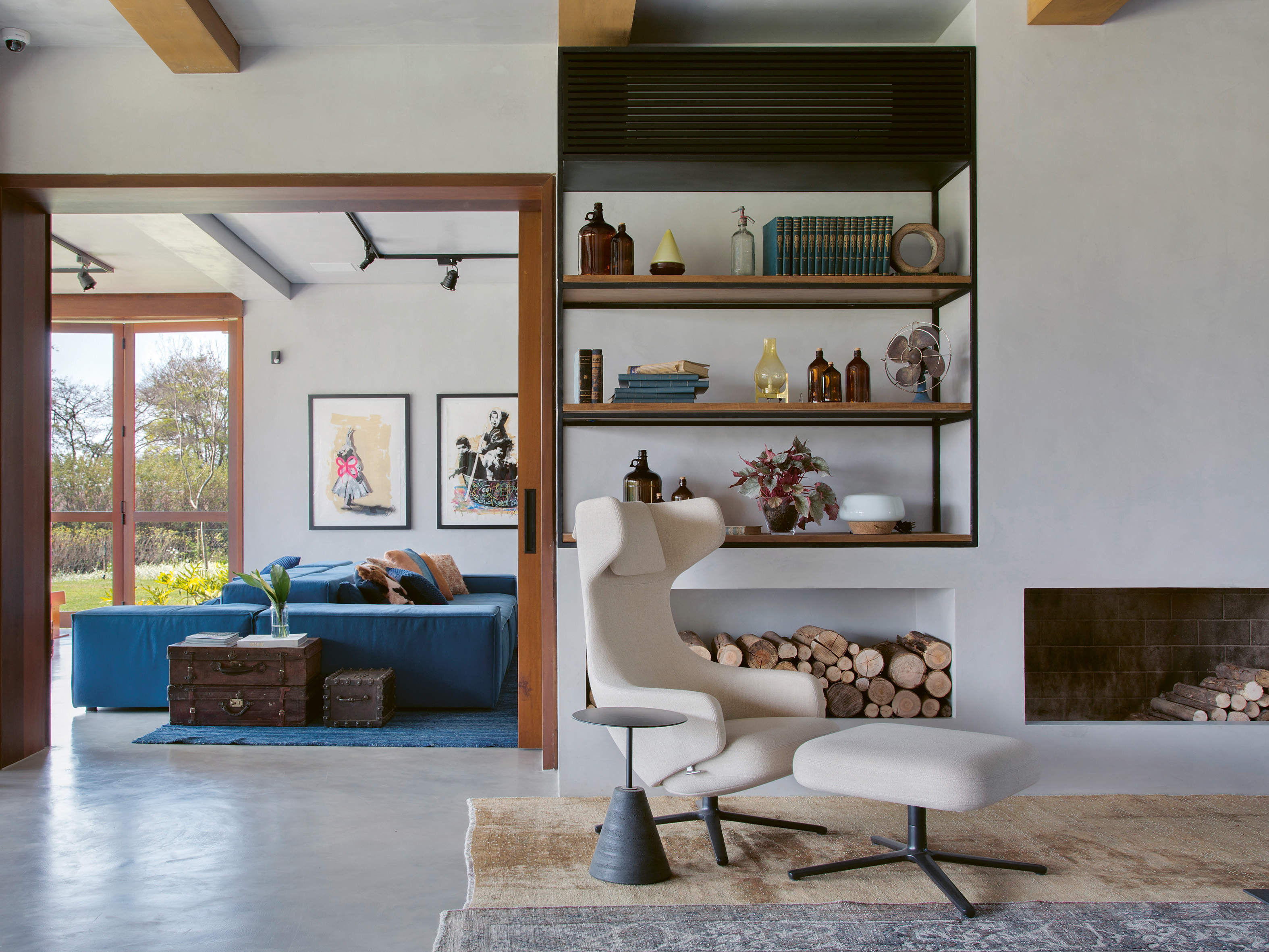
The next step is meeting your short-listed interior designers and explaining what you want them to do. “It is important that it is face-to-face so a client can connect with us and understand if we are the ideal people to design their space,” says Romano.
Think of everything you want to ask your interior designers ahead of meeting them so you know what information you want. “This way the process is clear and transparent,” says Pooley.
“Ask how the designer quantifies their fees, and what happens if you don’t like something and want to change it. Is the owner of the organization involved? I have a lot of projects and I have a lot of staff, but I am on every project and you can get me night or day.”
Also key is whether you like the designer. “It’s an intimate relationship, you’re allowing them into your home and sharing the details of your life,” says Brigette Romanek, head of Los Angeles-based Romanek Design Studio (pictured below) whose clients include Gwyneth Paltrow and Beyoncé.
“But it’s not an organic relationship that forms over time. Instead it happens rather quickly, so it’s important that the initial conversations are really transparent, revealing, and honest, covering all the meaty stuff so that you know how to move forward and that it all makes sense to you.”
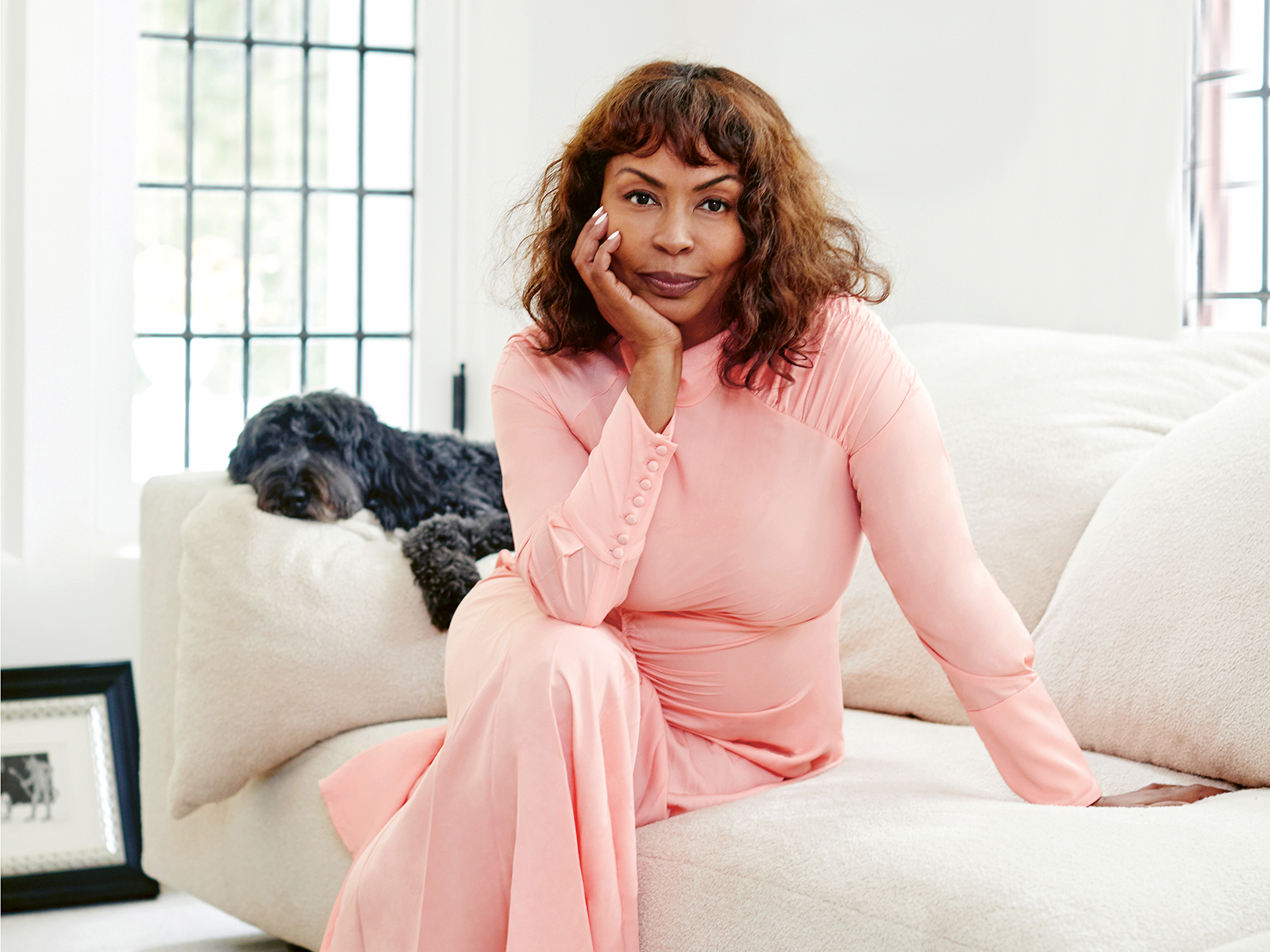
After the first meeting, each of the designers will send you their starting-point ideas along with a timeline and budget. “Always go for the designer that you feel has really listened to you,” says Pooley.
Once you have chosen your designer, it is a deep dive into the detail that will inform the brief. “I ask a lot of questions about the client’s lifestyle. I tell them, ‘I am going to get very curious about your personal life!’” says AbouZanat. “For example, do you watch TV? If so, how many hours? Is it something you do once a week or every day. How do you like to sit when watching TV? Do you eat when you watch TV or just have a drink?”
Creating someone’s home is like a puzzle and we know how the pieces fit together—Ahmad AbouZanat
Don’t hold back if there is something you want incorporated. “One client wanted us to include an old iron-leg sewing machine that was an heirloom and meant a lot to her,” says Romanek. “It was tricky to include, but we painted it all black and now it looks like a sculpture and she loves it.”
Visual input from the client is useful. “Rather than an overload of inspiration images, though, have an edited selection of ideas that show what style you like,” says AbouZanat. “For me, it’s more important that a client understands what they want from the project—is this their home for the next five years or forever more?”
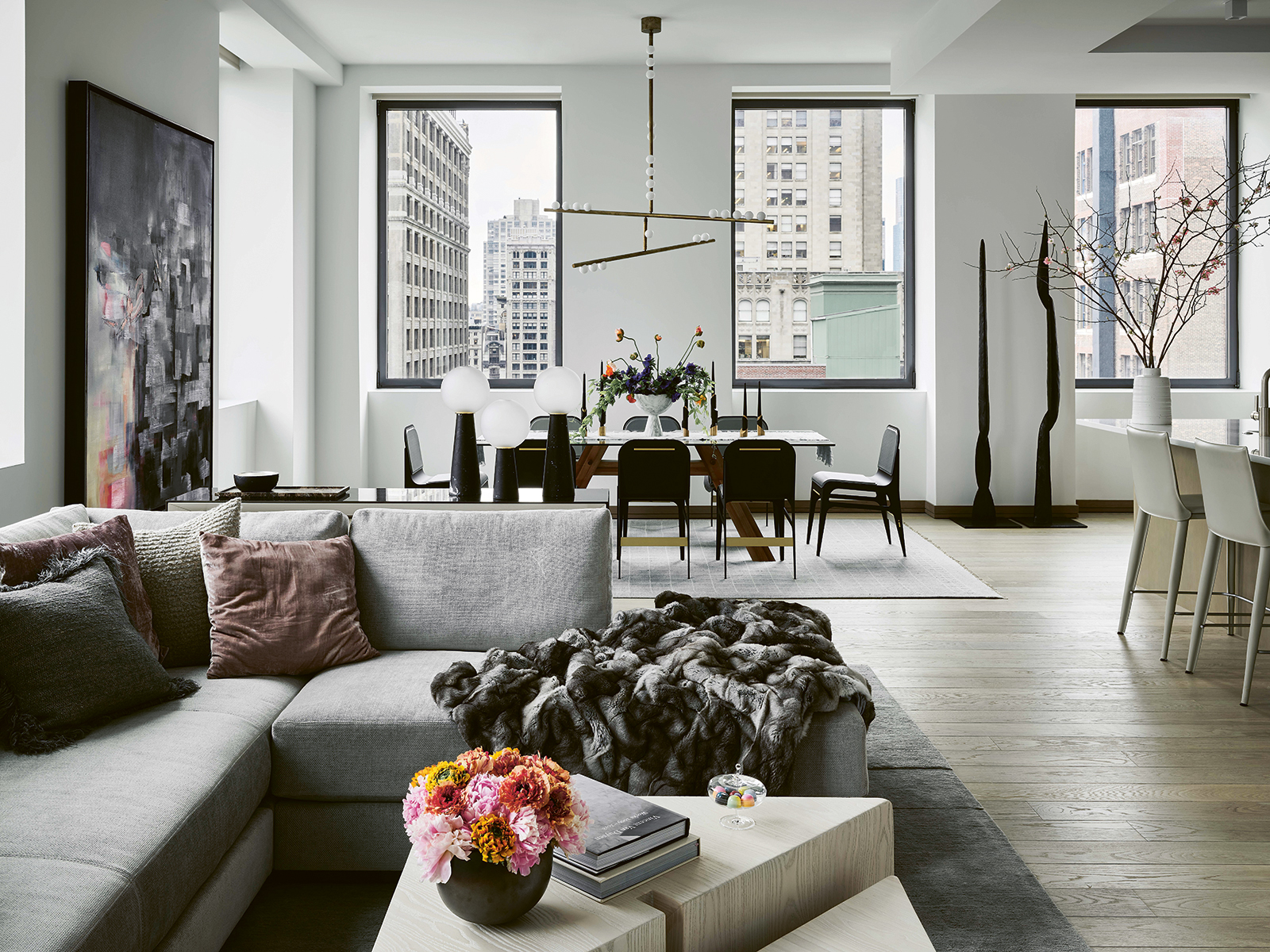
However, interior designers are happy to work with very little input, too. AbouZanat recently transformed a 3,000-square-foot (279 sq m) apartment in New York City’s Tribeca that was, at the start, just one bedroom and bathroom with an open-plan kitchen and living space. Today, it has three en suite bedrooms and a home office. The kitchen has been expanded for extra storage and the pantry is now a chic bar; the living room enjoys vistas over the Hudson River.
When AbouZanat’s client, a young marketing professional who liked to entertain and have friends to stay, saw the end result he was thrilled. “He told me, ‘This is exactly what I wanted, I just didn’t know what I wanted until now,’” says the designer.
The information gathered comes together to create a set of designs that includes everything from floor plans and renders to details about the fixtures and fittings. It also includes the cost and the length of time the project is estimated to take. Where decisions have to be made, the interior designer will, where appropriate, offer a choice.
“Once there is a clear idea of the direction a client wants to go in, it is easier to narrow down the decisions they have to make,” says AbouZanat. “I show a selection of items in an order of preference, which I find helps a client to choose.”
Romanek likes to throw in what she calls a “wild card” option. “It’s something unexpected,” she says. “It’s fun to keep people interested and to think, ‘I didn’t know I would love this!’ Gwyneth [Paltrow] is a good example. I wanted to put a chandelier in the dining room of her home and she wasn’t sure, but we went ahead and today she loves it, and so many people who see it are struck by the piece and it becomes a talking point.”
The remodeling of a home—during which the layout is restructured—is stressful, so what can clients do to keep the process moving smoothly? “Trust us,” says Pooley. “When we give an estimate it’s because we have gone to three or more suppliers—a client won’t find it cheaper.”
Similarly, AbouZanat counsels against ignoring an interior designer’s advice. “If we say no to a piece of furniture or material, there is a good reason for it. Creating someone’s home is like a puzzle and we know how the pieces fit together.”
Be in no doubt, emphasizes Romanek, that however much a challenge it might be, the end result will be worth it. “Your home influences how you live, and I want you to be happy in your space,” she says. “Whatever is important to you is important to me. It’s all about creating a home that is beautiful, timeless, and uniquely yours.”
Banner: A London home created by interior designer Katharine Pooley. Credit: Nico Wills